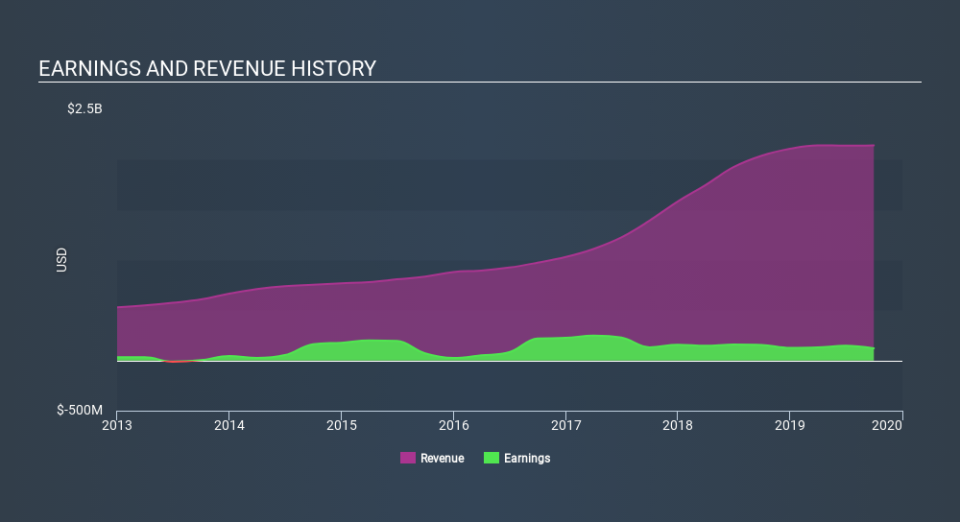Before You Buy SINA Corporation (NASDAQ:SINA), Consider Its Volatility

If you're interested in SINA Corporation (NASDAQ:SINA), then you might want to consider its beta (a measure of share price volatility) in order to understand how the stock could impact your portfolio. Volatility is considered to be a measure of risk in modern finance theory. Investors may think of volatility as falling into two main categories. The first category is company specific volatility. This can be dealt with by limiting your exposure to any particular stock. The other type, which cannot be diversified away, is the volatility of the entire market. Every stock in the market is exposed to this volatility, which is linked to the fact that stocks prices are correlated in an efficient market.
Some stocks mimic the volatility of the market quite closely, while others demonstrate muted, exagerrated or uncorrelated price movements. Beta is a widely used metric to measure a stock's exposure to market risk (volatility). Before we go on, it's worth noting that Warren Buffett pointed out in his 2014 letter to shareholders that 'volatility is far from synonymous with risk.' Having said that, beta can still be rather useful. The first thing to understand about beta is that the beta of the overall market is one. Any stock with a beta of greater than one is considered more volatile than the market, while those with a beta below one are either less volatile or poorly correlated with the market.
View our latest analysis for SINA
What SINA's beta value tells investors
Zooming in on SINA, we see it has a five year beta of 1.33. This is above 1, so historically its share price has been influenced by the broader volatility of the stock market. If this beta value holds true in the future, SINA shares are likely to rise more than the market when the market is going up, but fall faster when the market is going down. Share price volatility is well worth considering, but most long term investors consider the history of revenue and earnings growth to be more important. Take a look at how SINA fares in that regard, below.
Could SINA's size cause it to be more volatile?
SINA is a fairly large company. It has a market capitalisation of US$2.7b, which means it is probably on the radar of most investors. It has a relatively high beta, suggesting it may be somehow leveraged to macroeconomic conditions. For example, it might be a high growth stock with lots of investors trading the shares. It's notable when large companies to have high beta values, because it usually takes substantial capital flows to move their share prices.
What this means for you:
Beta only tells us that the SINA share price is sensitive to broader market movements. This could indicate that it is a high growth company, or is heavily influenced by sentiment because it is speculative. Alternatively, it could have operating leverage in its business model. Ultimately, beta is an interesting metric, but there's plenty more to learn. This article aims to educate investors about beta values, but it's well worth looking at important company-specific fundamentals such as SINA’s financial health and performance track record. I urge you to continue your research by taking a look at the following:
Future Outlook: What are well-informed industry analysts predicting for SINA’s future growth? Take a look at our free research report of analyst consensus for SINA’s outlook.
Past Track Record: Has SINA been consistently performing well irrespective of the ups and downs in the market? Go into more detail in the past performance analysis and take a look at the free visual representations of SINA's historicals for more clarity.
Other Interesting Stocks: It's worth checking to see how SINA measures up against other companies on valuation. You could start with this free list of prospective options.
If you spot an error that warrants correction, please contact the editor at editorial-team@simplywallst.com. This article by Simply Wall St is general in nature. It does not constitute a recommendation to buy or sell any stock, and does not take account of your objectives, or your financial situation. Simply Wall St has no position in the stocks mentioned.
We aim to bring you long-term focused research analysis driven by fundamental data. Note that our analysis may not factor in the latest price-sensitive company announcements or qualitative material. Thank you for reading.

 Yahoo Finance
Yahoo Finance 
